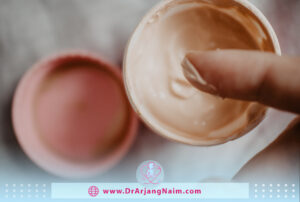Lichen sclerosus is a chronic, inflammatory skin condition that most commonly affects the genital and anal areas. It can occur in both men and women, but it’s more frequently diagnosed in women, especially postmenopausal ones.
The exact cause isn’t fully understood, but it’s believed to involve an abnormal immune system response and possibly hormonal imbalances. Symptoms often include itching, discomfort, and changes in the skin’s appearance, like white patches that may appear thin, wrinkled, or smooth.
Although there’s no cure for lichen sclerosus, treatment options aim to alleviate symptoms and prevent complications. Topical corticosteroids are commonly prescribed to reduce inflammation and ease itching. Regular monitoring is crucial as this condition can slightly increase the risk of developing skin cancer in the affected areas.
If you or someone you know is experiencing symptoms that resemble lichen sclerosus, consulting a healthcare professional is essential for proper diagnosis and management. Regular check-ups can help monitor the condition and ensure appropriate treatment.
What is lichen sclerosus?
It is a skin disease that can cause a wide range of problems that can affect the skin:
- Vulva
- Penis
- Foreskin
- Urethra
- Anus
It often looks like a discolored, thin, itchy, scaly patch. Blisters and sores may also develop on the genitals. But these symptoms rarely appear in other parts of the body.
Lichen sclerosus is a chronic (lifelong) disease. Left untreated, it can lead to ulceration, making it difficult or painful to have sex, urinate, or defecate. Untreated lichen sclerosus can also increase the chance of developing a type of skin cancer (penile cancer and squamous cell carcinoma of the vulva). There is no cure for lichen sclerosus, although treatment can help manage symptoms.

Symptoms
It can manifest differently from person to person, but common symptoms include:
- Itching: Persistent and intense itching in the affected area can be uncomfortable and distressing.
- Changes in skin appearance: The skin may become thin, wrinkled, or have a smooth, shiny appearance. White patches might develop, appearing as white, shiny, or crinkled skin areas.
- Discomfort or pain: Some individuals may experience discomfort or pain, especially during sexual intercourse or when urinating.
- Tearing or bleeding: In severe cases, the skin might become fragile and tear easily, leading to bleeding or ulceration.
- Inflammation and redness: The affected area may be inflamed, red, or have a rash-like appearance.
- Scarring: Long-term lichen sclerosus can cause scarring in the genital or anal areas, potentially leading to complications like narrowing of the vaginal opening or foreskin in men.
It’s essential to note that lichen sclerosus primarily affects the genital and anal regions but can also occur in other parts of the body.
Causes
The precise cause of lichen sclerosus isn’t entirely understood, but it’s believed to involve a combination of genetic, hormonal, and immune system factors.
Autoimmune response
Some researchers believe lichen sclerosus might be an autoimmune condition where the body’s immune system mistakenly attacks healthy tissues, leading to inflammation and damage.
Hormonal imbalance
Hormonal imbalances, especially estrogen, might contribute to the development of lichen sclerosus. It’s often found in postmenopausal women, suggesting a link to reduced estrogen levels.
Genetics
There might be a genetic predisposition to developing lichen sclerosus, as it can sometimes run in families.
Trauma or irritation
In some cases, trauma or repeated irritation to the affected area could trigger or exacerbate lichen sclerosus, although it’s not a direct cause.
Infections
Some studies suggest that infections or certain microorganisms could trigger an abnormal immune response that leads to lichen sclerosus. However, more research is needed in this area.
While these factors are thought to contribute to the development of lichen sclerosus, the exact cause remains unclear. Research is ongoing to better understand the condition and its triggers, which can help improve treatments and management strategies.

Risk factors
Anyone can get lichen sclerosus, but the risk is higher if:
- Postmenopausal women
- Children under ten years old
- Women who have another autoimmune disease, such as hypothyroidism
- Men with urinary incontinence or uncircumcised penis
- People who have a family history of this disease
Complications
But sclerosis can lead to bruises, blisters, and even sores that are open wounds. If these wounds are not kept clean, they can become infected. Because they are often in the genital and anal areas, infection can be difficult to prevent.
However, sclerosis can turn into a type of skin cancer called squamous cell carcinoma. If develops into squamous cell carcinoma, it may look like red lumps, sores, or scaly areas. If the disease is not controlled, cancer may develop further.
Diagnosis
Diagnosing typically involves a combination of medical history review, physical examination, and sometimes additional tests. Here’s what the diagnostic process might involve:
- Medical History: Your doctor will ask about your symptoms, duration, and previous treatments. They might also inquire about your medical history and family history of skin conditions.
- Physical Examination: A visual inspection of the affected skin is essential. The appearance of white, thin, wrinkled, or smooth patches helps identify lichen sclerosus. It might also involve examining the genital or anal area for any scarring or changes in skin texture.
- Biopsy: In some cases, a small sample of affected skin might be taken (biopsy) to confirm the diagnosis. The biopsy helps rule out other skin conditions and provides a more definitive diagnosis of lichen sclerosus.
- Additional Tests: Occasionally, additional tests might be recommended, such as blood tests or other laboratory investigations, to rule out other conditions or to check for potential associated factors like hormonal imbalances.
Once diagnosed, the condition might be regularly monitored to assess its progression and response to treatment.
Treatment
With treatment, symptoms often improve or disappear. The treatment of lichen sclerosus depends on the severity of the symptoms and its location in the body. Treatment can help reduce itching, improve the appearance of the skin, and reduce the risk of scarring. Even with successful treatment, symptoms often recur.
Topical corticosteroids
These are the mainstay of treatment and are typically prescribed as a first-line therapy. They help reduce inflammation and itching. Direct application to the affected skin is recommended for a specified duration as directed by your healthcare provider.
Moisturizers and emollients
Regular moisturizing creams or ointments can help keep the affected area hydrated and reduce discomfort from dryness.

Hormonal creams
In some cases, estrogen creams may be recommended for postmenopausal women to help restore elasticity and thickness to the skin.
Calcineurin inhibitors
These medications, available in topical form, might be prescribed if corticosteroids aren’t effective or suitable. They help reduce inflammation.
Surgery
In cases where scarring has led to complications such as narrowing of the vaginal opening or foreskin in men (phimosis), surgery might be necessary to address these issues.
Ongoing monitoring
Regular follow-ups with a healthcare provider are crucial to monitor the condition’s progress, evaluate the response to treatment, and check for any potential complications.
It’s essential to follow your healthcare provider’s advice regarding treatment, application of medications, and the frequency of follow-up visits. Managing lichen sclerosus often involves a combination of therapies tailored to individual needs. In addition to medical treatment, lifestyle modifications such as avoiding irritants and maintaining good hygiene can also help manage symptoms.
Prevention
While it’s not always possible to prevent lichen sclerosus, certain measures may help reduce the risk or minimize symptoms:
- Good Genital Hygiene: Keeping the genital area clean and dry is essential. Gentle cleansing with mild, fragrance-free soaps and patting the area dry can help prevent irritation.
- Avoiding Irritants: Avoiding harsh soaps, perfumes, and irritating substances in the genital area can help prevent triggering or exacerbating lichen sclerosus.
- Prompt Treatment of Infections: Treating infections promptly, especially in the genital area, might help reduce the risk of complications or the development .
- Regular Check-ups: Regular medical check-ups, especially for women after menopause, can aid in the early detection and treatment of lichen sclerosus or related symptoms.
- Moisturizing: Keeping the skin well-moisturized with appropriate creams or ointments may help prevent dryness and reduce the risk of irritation in susceptible individuals.
- Prompt Medical Attention: If you notice any changes in the genital or anal area, such as itching, discomfort, or changes in skin appearance, seek medical attention promptly for proper evaluation and treatment.
While these measures might not guarantee prevention, they can contribute to maintaining genital health and potentially reduce the risk of developing or exacerbating lichen sclerosus.
The bottom line
Lichen sclerosus is a chronic skin condition that affects the genital and anal areas, leading to itching, discomfort, and changes in skin appearance, like white patches or thinning. It’s more common in women, especially after menopause. Diagnosis involves a physical exam and sometimes a biopsy. Treatment typically includes corticosteroid creams to reduce inflammation, moisturizers, and sometimes surgery for complications. Good hygiene, avoiding irritants, and seeking prompt medical attention for symptoms are key for management. Regular monitoring by healthcare providers helps in tracking progress and preventing complications. Early diagnosis and proper care are essential for managing symptoms and preventing long-term issues associated with lichen sclerosus.
Additional questions
- Is lichen sclerosus an STI?
Lichen sclerosus is not considered a sexually transmitted infection (STI). While its exact cause isn’t fully understood, it’s believed to involve autoimmune and hormonal factors rather than being transmitted through sexual contact.
- Is lichen sclerosus an autoimmune disease?
Not enough information is available to classify lichen sclerosus as an autoimmune disease. But people with lichen sclerosus usually have autoimmune disorders, including:
- Alopecia areata
- Vitiligo
- Pernicious anemia
- Type 1 diabetes
- Some thyroid diseases
- What is the difference between balanitis and lichen sclerosus?
Balanitis is inflammation of the head of the penis, commonly due to infection or irritation, causing redness, swelling, and discomfort. It often occurs in uncircumcised men and is typically treatable with proper hygiene and medications. Lichen sclerosus, a chronic inflammatory skin condition, affects the genital area with white, thin patches, itching, and changes in skin texture. It’s not caused by infection but involves autoimmune and hormonal factors, potentially leading to scarring. While both impact the genital region, they differ in causes and characteristics, requiring accurate diagnosis by a healthcare provider for appropriate treatment.
- What are the ten skin diseases?
- Acne
- Alopecia Areata
- Atopic Dermatitis
- Epidermolysis Bullosa
- Hidradenitis Suppurativa (HS)
- Ichthyosis
- Pachyonychia Congenita
- Pemphigus
- What is the most fatal skin disease?
Melanoma is the deadliest and most preventable skin disease. It is a skin cancer that arises from melanocytes, the skin cells that carry the pigment, also known as melanin, that gives the skin its color.
References
https://www.mayoclinic.org/diseases-conditions/lichen-sclerosus/diagnosis-treatment/drc-20374452
https://my.clevelandclinic.org/health/diseases/16564-lichen-sclerosus
https://dermnetnz.org/topics/lichen-sclerosus
https://www.webmd.com/skin-problems-and-treatments/lichen-sclerosis





great information
Thanks for your attention.